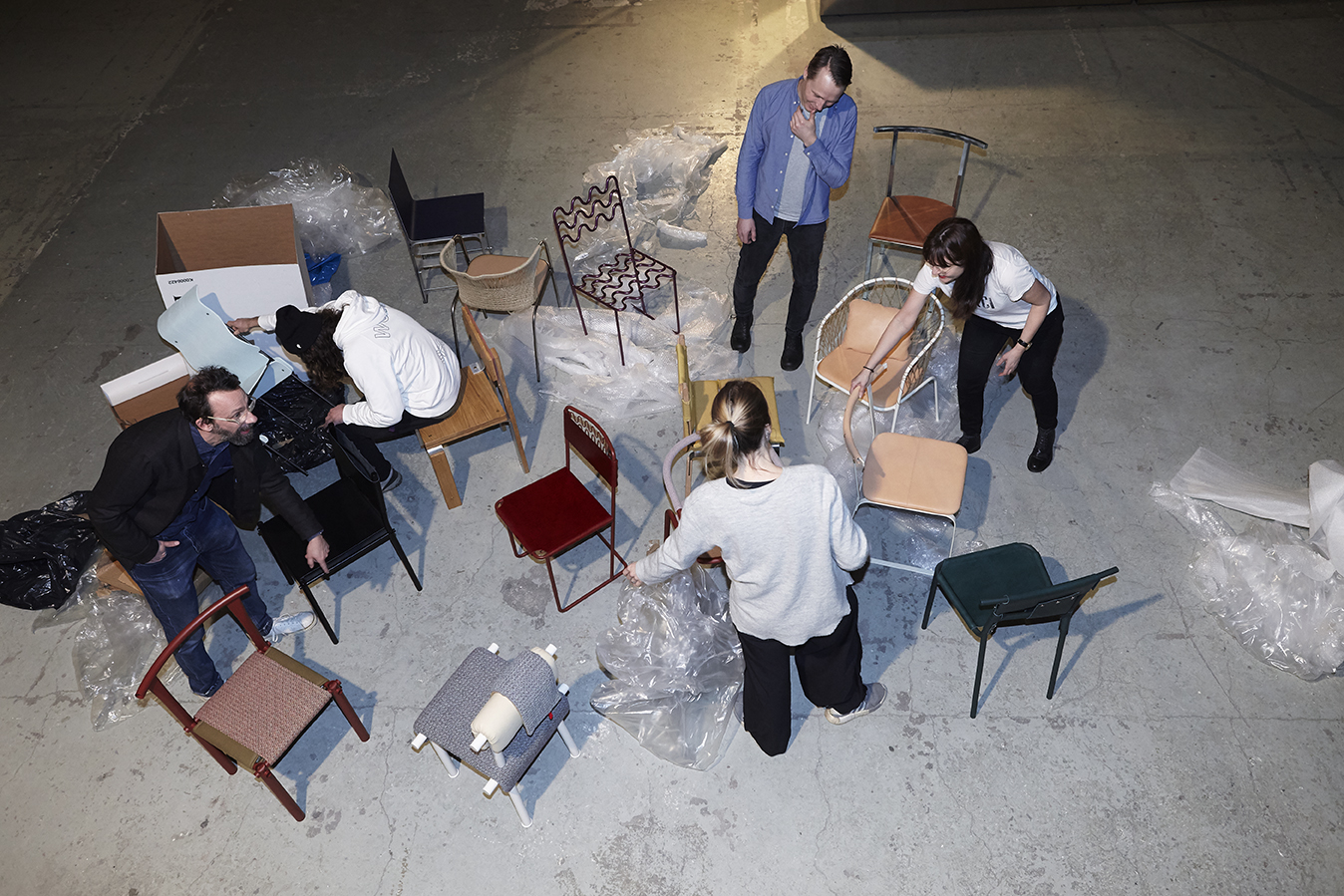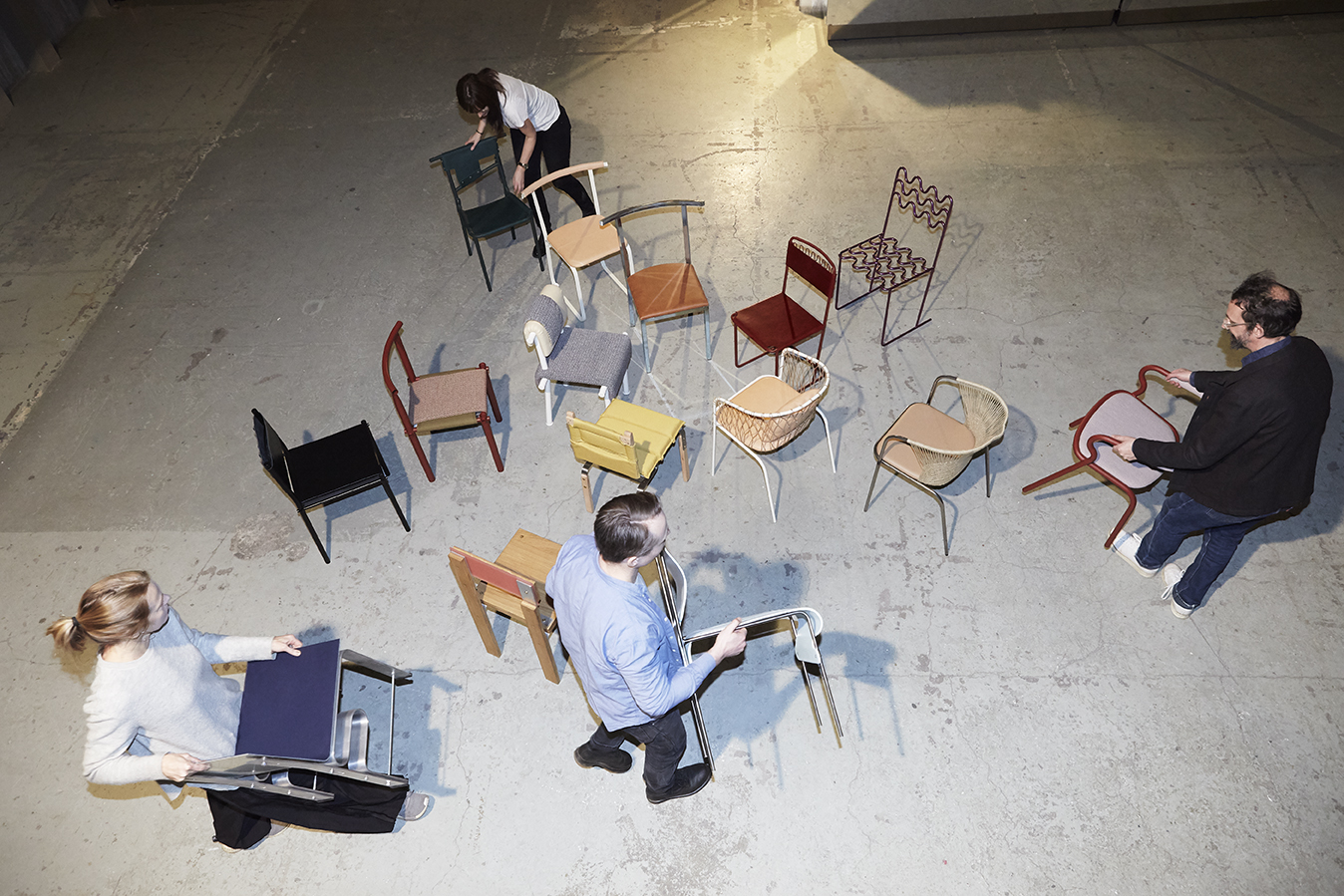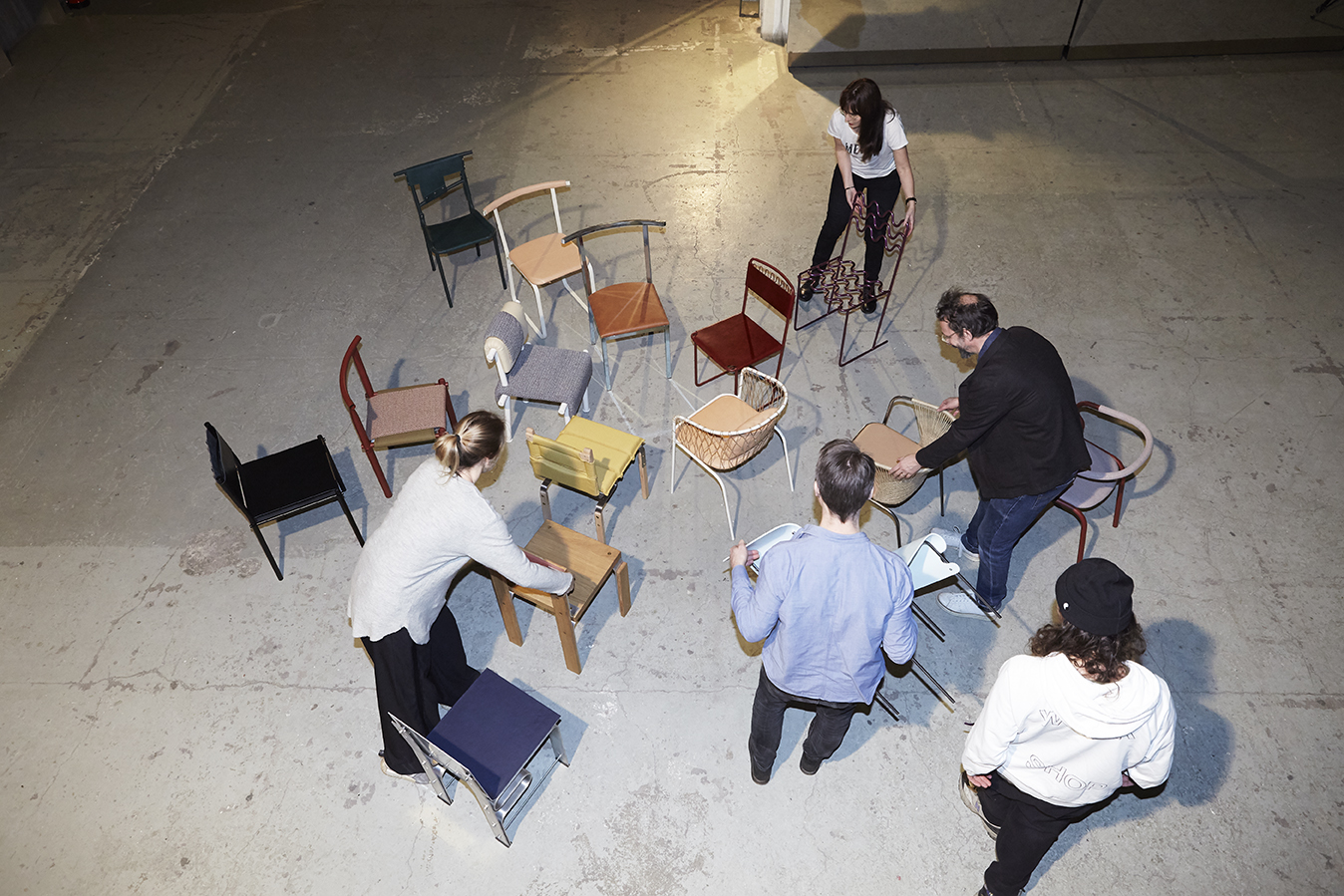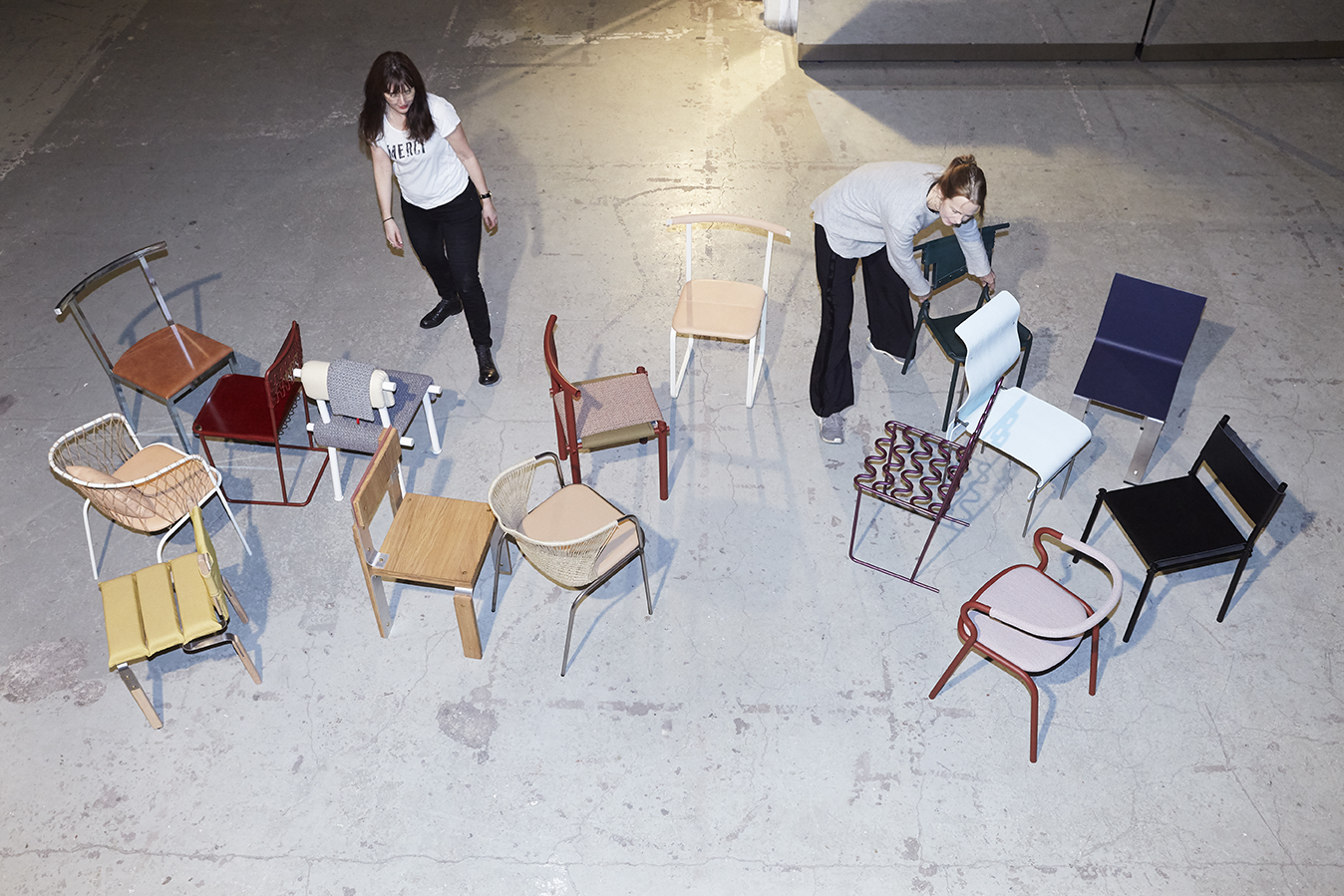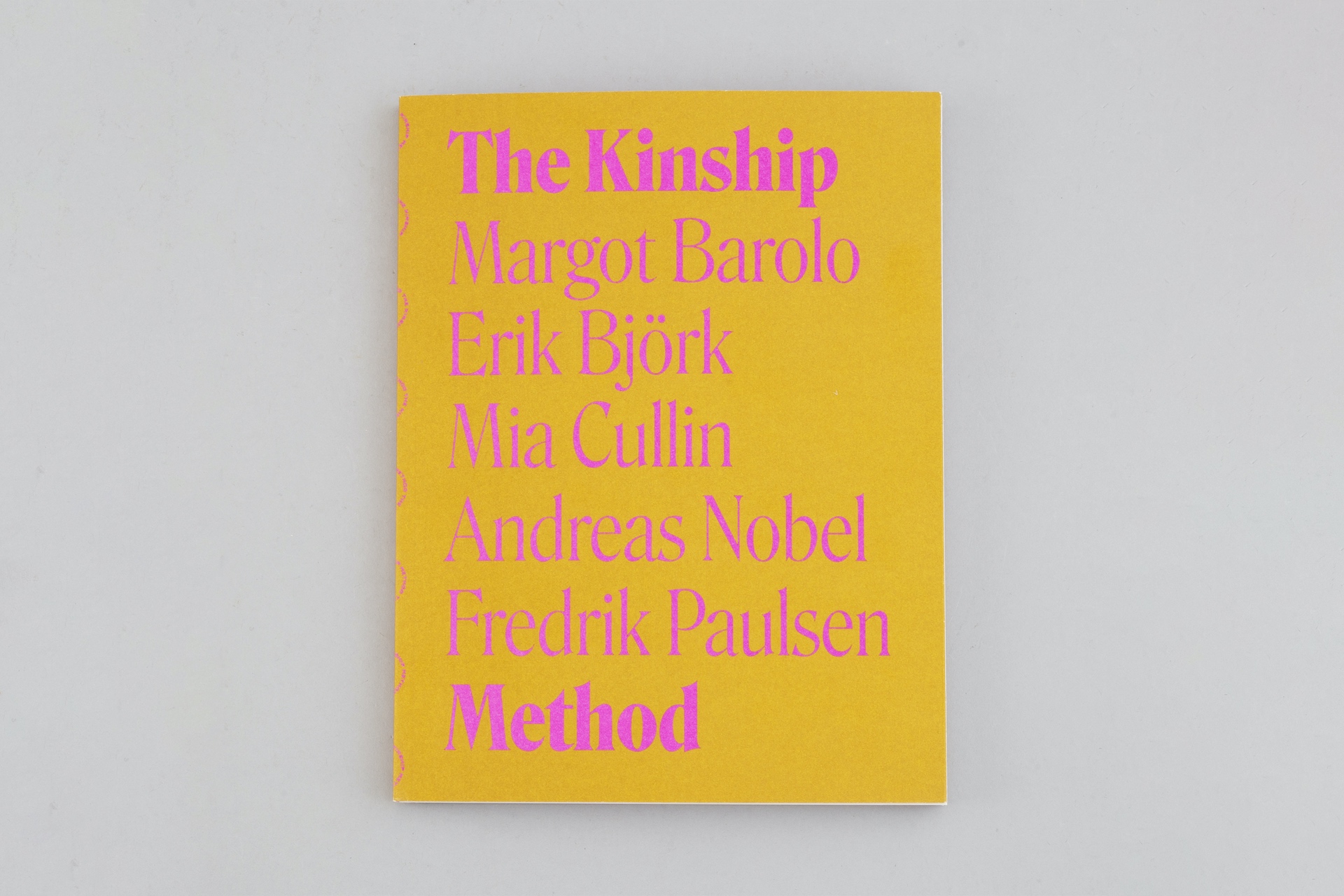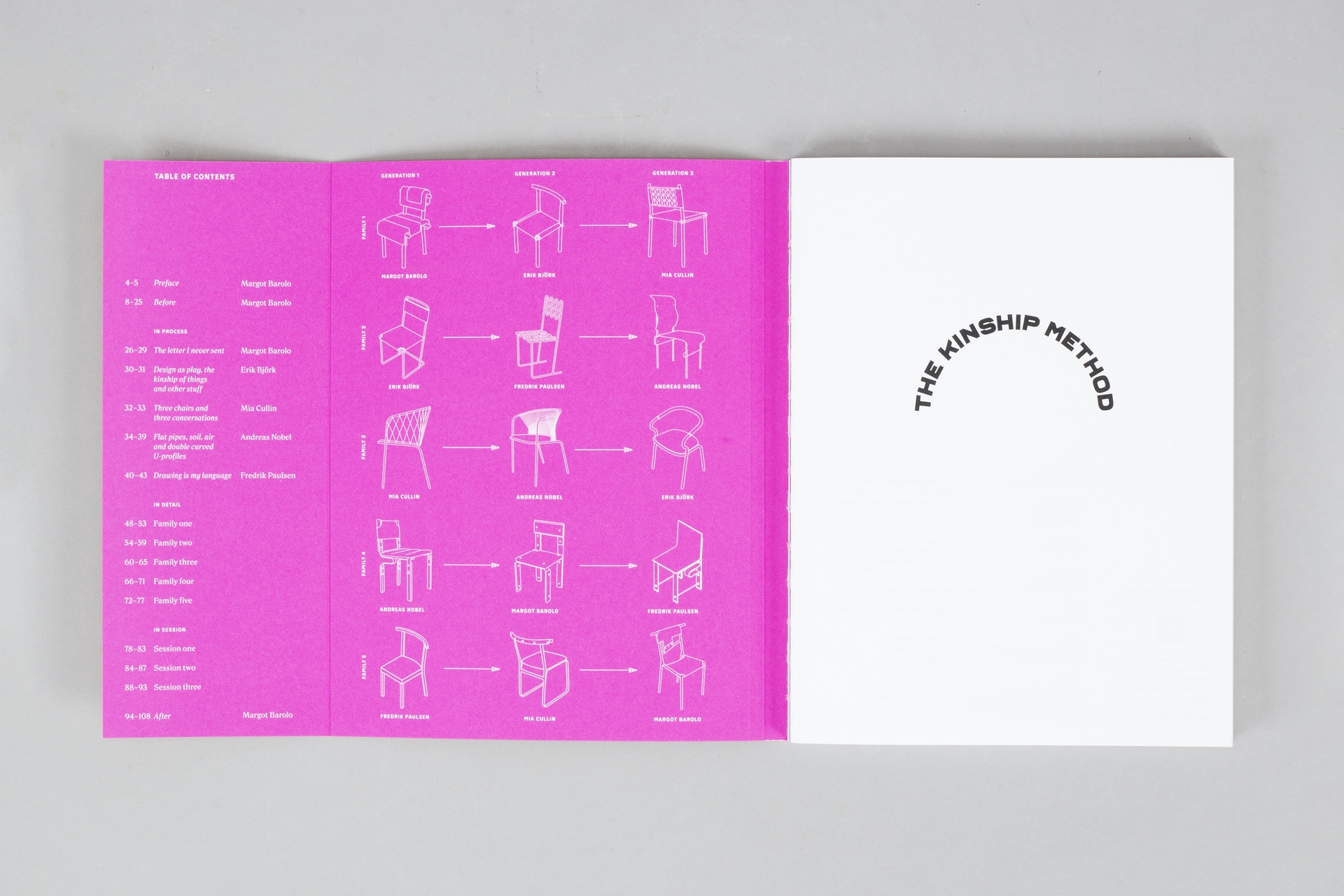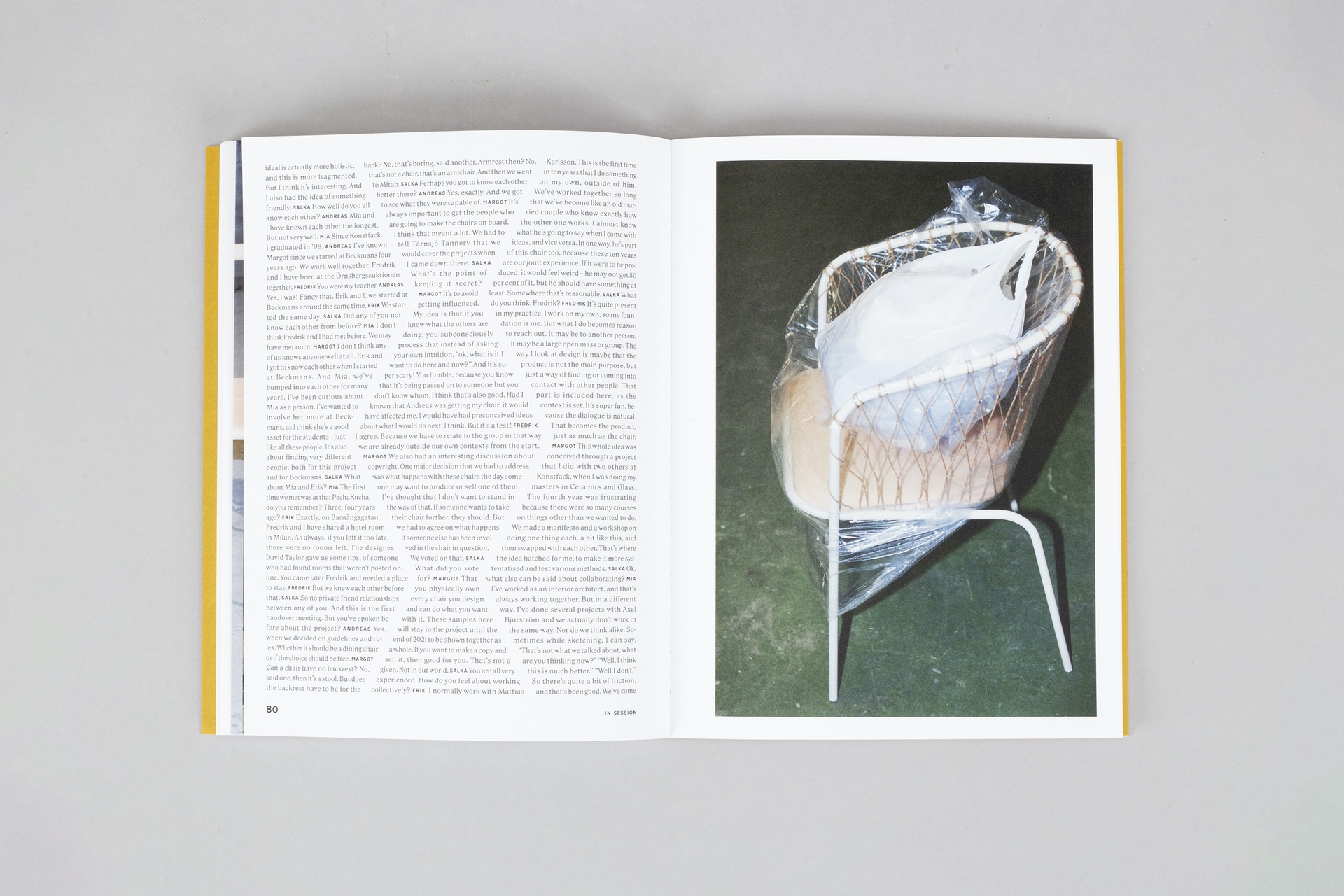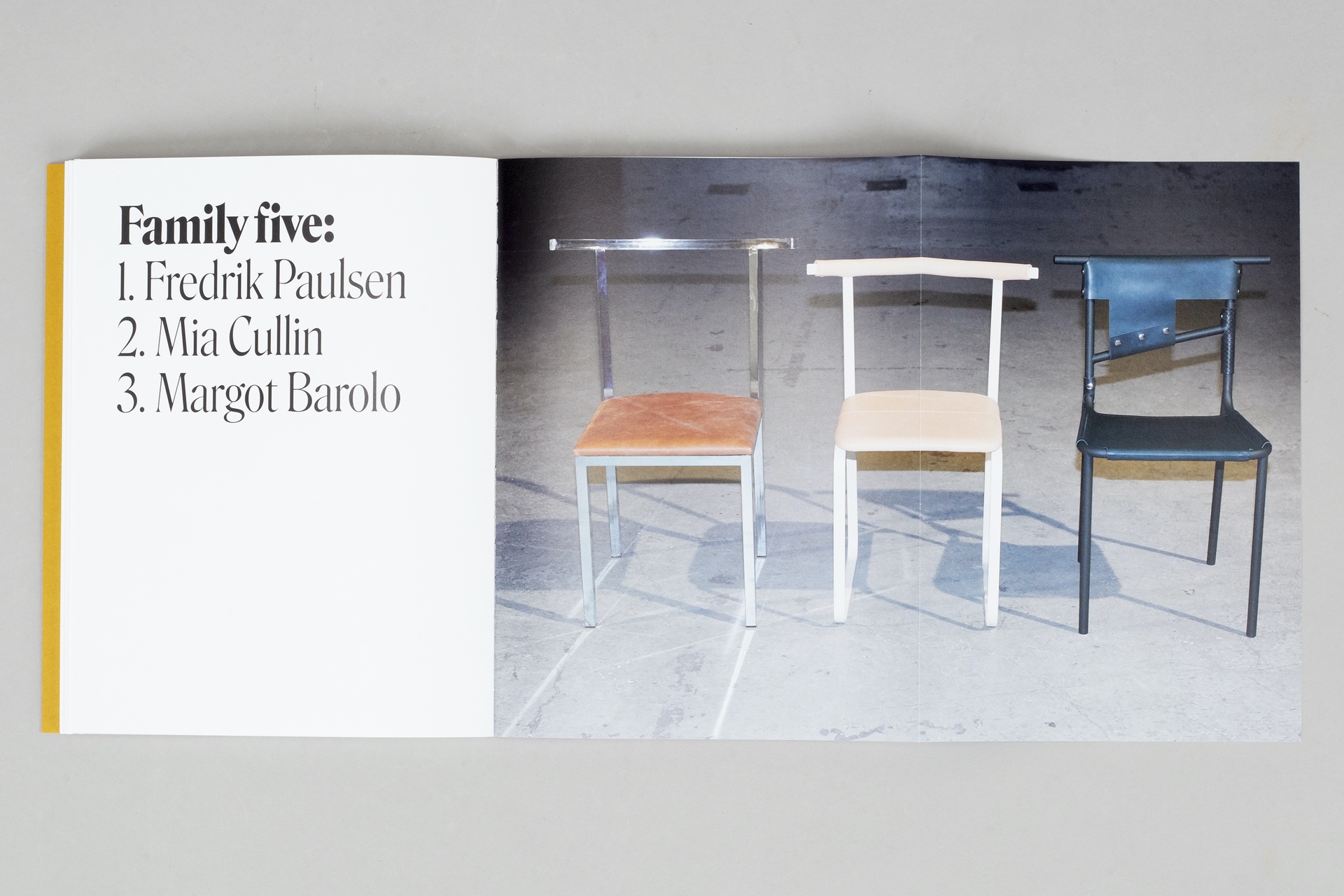News
Sept 23–26, 2021
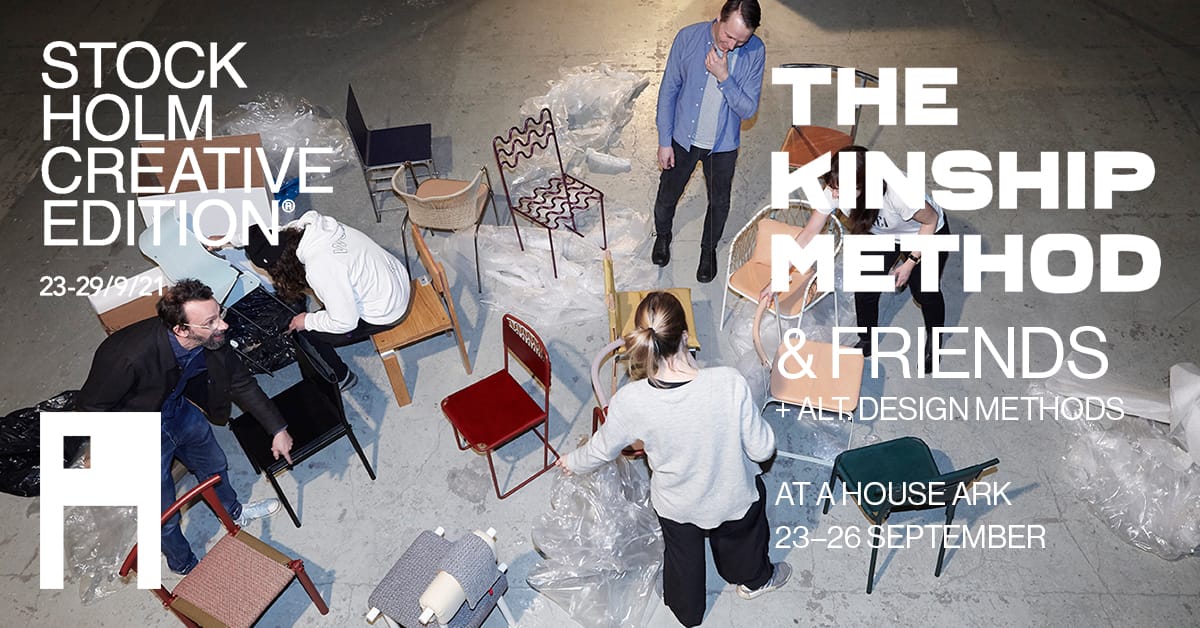
The Kinship Method & FRIENDS + Alt. Design Methods
Stockholm Creative Edition, the new annual design week, invites The Kinship Method & Friends to show experimental projects with alternative design processes and methods at A House Ark. To create design methods with focus upon other aspects than the normal is one way to break patterns, structures and outcome. New forms take place together with new thoughts. Together with invited colleagues they show a diversity of projects linked by alternative design methods. During 23–26 September within the exhibition you will experience book release, design therapy, performances, audiovisual experiences, music, bar, etc. See the full program at our Facebook event!
The Kinship Project
- Margot Barolo
- Andreas Nobel
- Mia Cullin
- Fredrik Paulsen
- Erik Björk
The Ghost
- Jenny Nordberg
Swedish Girls
- Josefin Zachrisson
- Matilda Ellow
- Julia Jondell
- Mira Bergh
The Sofa
- Frida Fröderberg
Elak Form
- Carl-Oscar Karlsson
Bastarder
- Samir Alj Fält
- Alicia Donat-Magnin
Audiovisual Artists
- Jonas Johansson
- Tove Nowén
- Away From People
Musician
- Concat Function
And more…
Links
May 28th, 2021
Grant
Margot Barolo has received a grant and diploma from the Stockholm House of Culture for her work with the project The Kinship Method.
Feb 6th, 2021
Book release
The book is published by Arvinius + Orfeus Publishing
Feb 6th – Mar 28th, 2021
Exhibition
Exhibition at Rian designmuseum in Falkenberg.
Jan 24th – Feb 9th, 2020
Exhibition
Exhibition at Sven-Harrys Art Museum
About
Photos by Karin Björkquist
The Kinship Method is a method and a project initiated and developed by the designer Margot Barolo. In this group experiment she invited her colleagues Fredrik Paulsen, Mia Cullin, Andreas Nobel, and Erik Björk to collectively challenge one another in the art of letting go, to give and receive as a working method. All of them are well-established designers who have often worked with innovative, investigative methods.
The process in The Kinship Method was organized in three stages. It began individually with each one designing and fabricating their own chair. When the participants were finished, they met for a shared reflection in what could be described as design therapy. The group conversation concluded with each designer being randomly assigned another’s chair and challenged to incorporate 20 – 40 percent of it in making a new chair. This procedure was then repeated for a third round. Consequently, fragments, pieces and artistic expressions are inherited from the previous generation resulting in a total of fifteen chairs that are all interrelated with one another.
The purpose of this project was never to make the best chairs or the best design. That would require a different structure and someone other to run it. One might assume at this point, that it is about processing any possible design traumas, challenging authorship, finding new ways to collaborate. But those three are just ingredients, or means, for developing new ideas on alternative designer roles and design production.
Generation
1
Generation
2
Generation
3
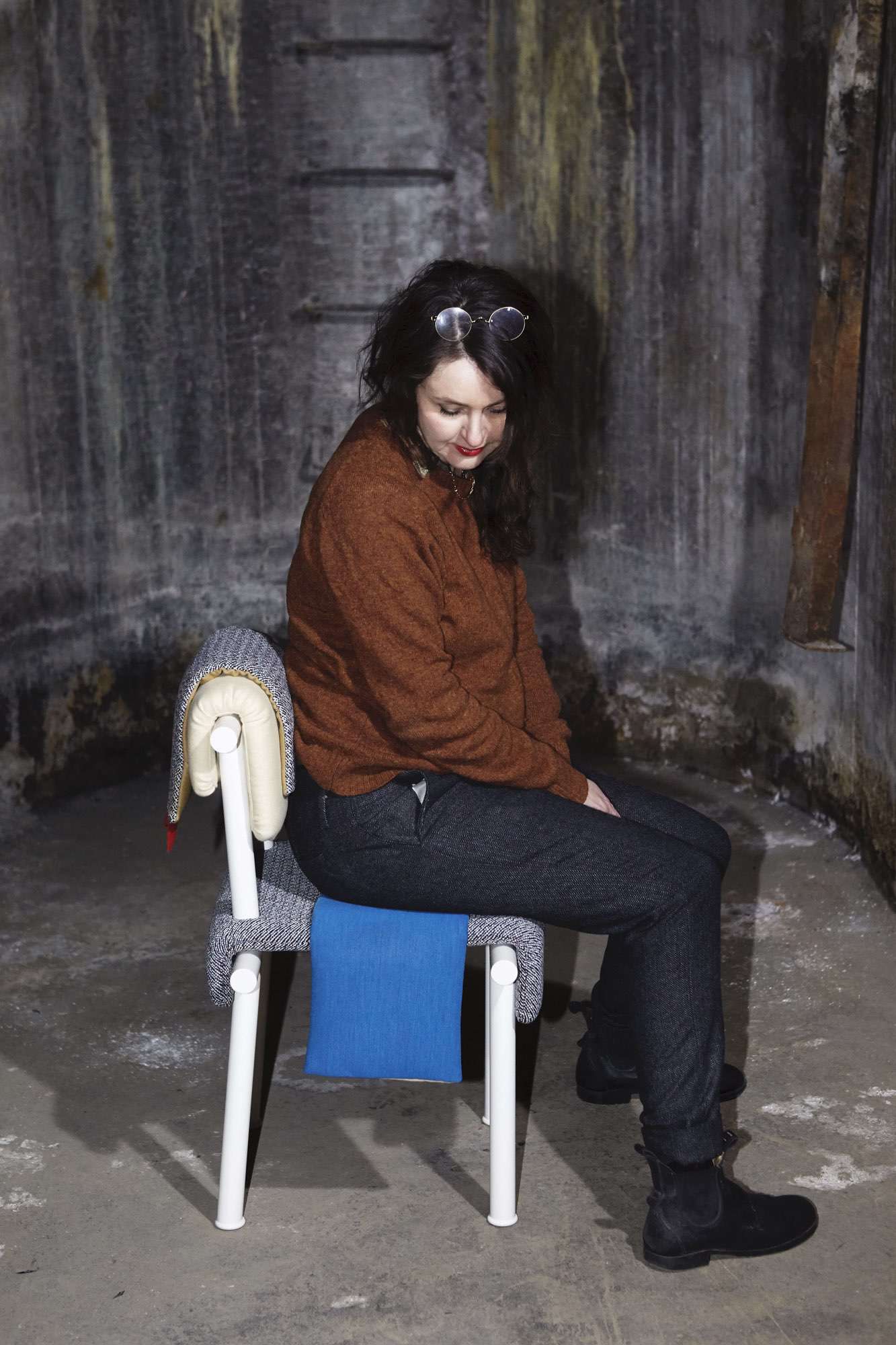
Margot
Barolo
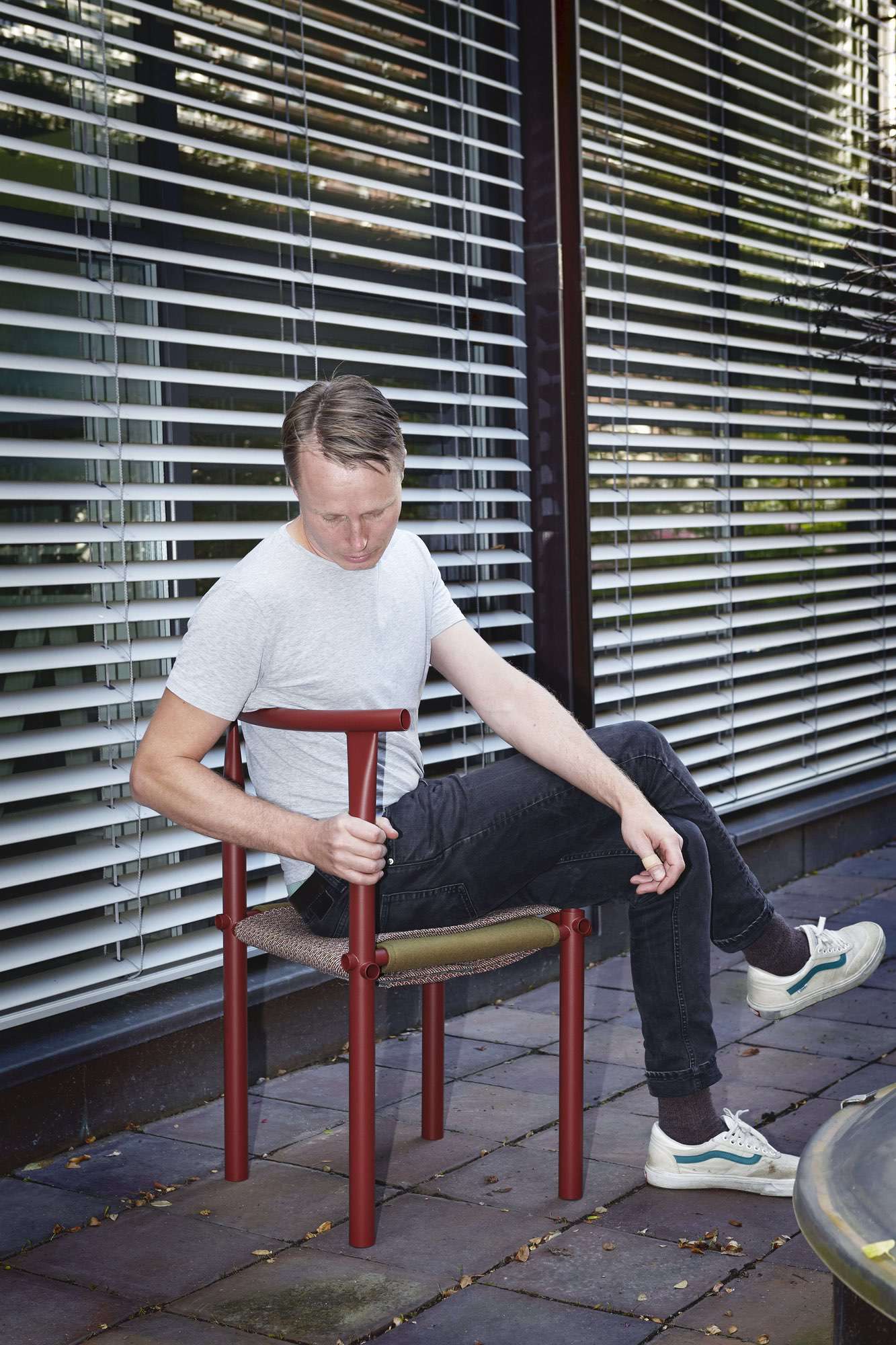
Erik
Björk
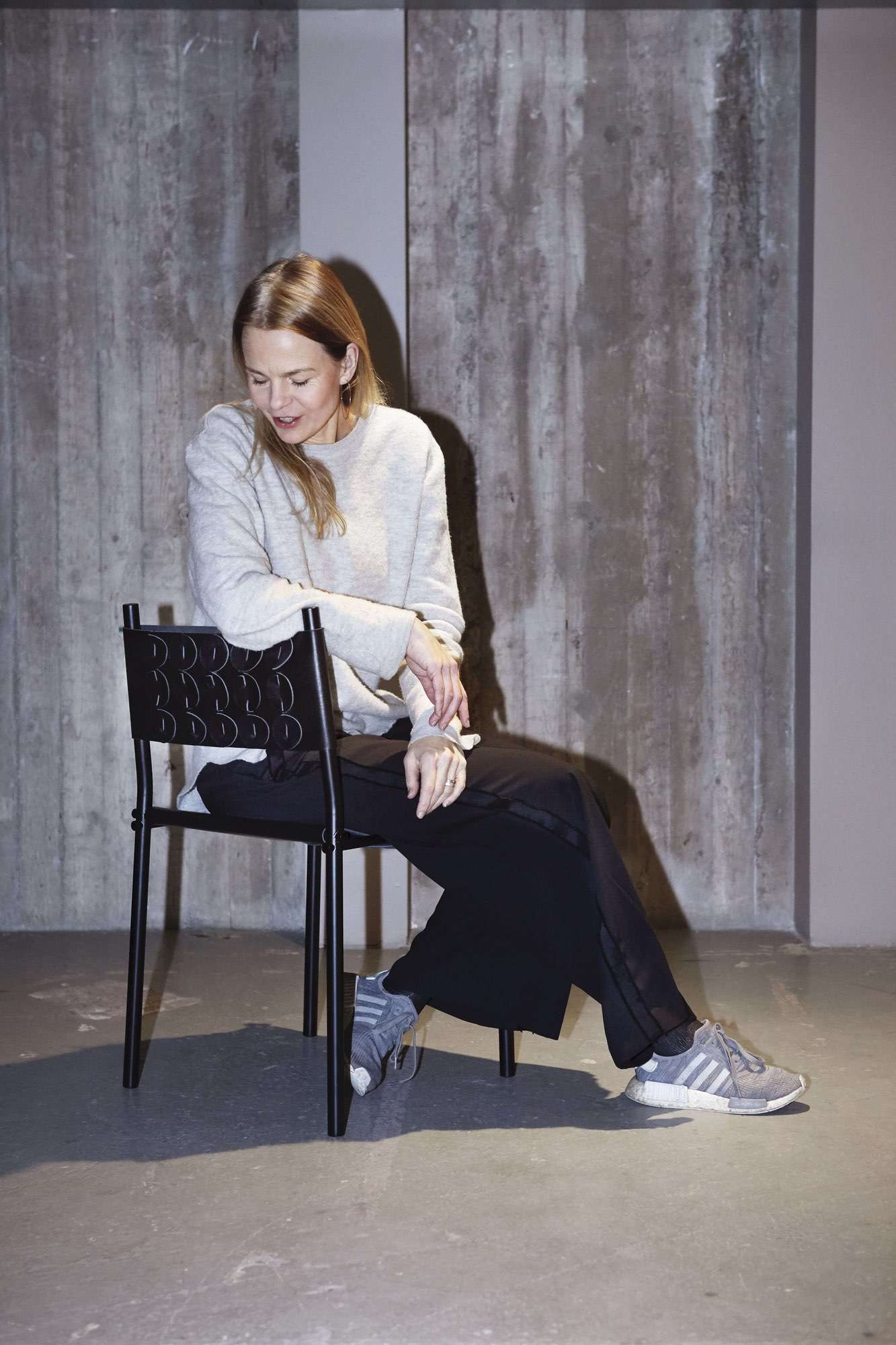
Mia
Cullin
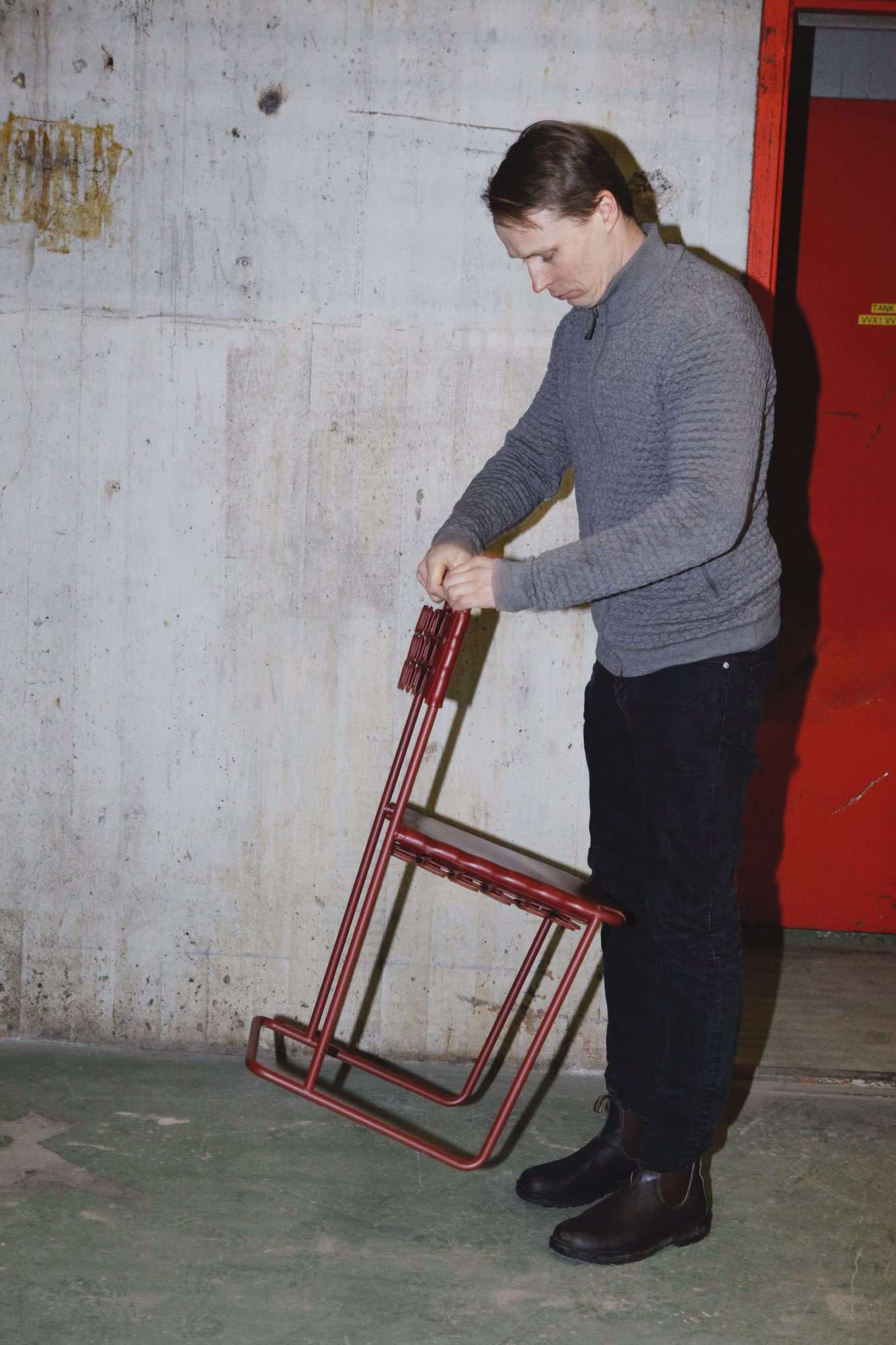
Erik
Björk

Fredrik
Paulsen
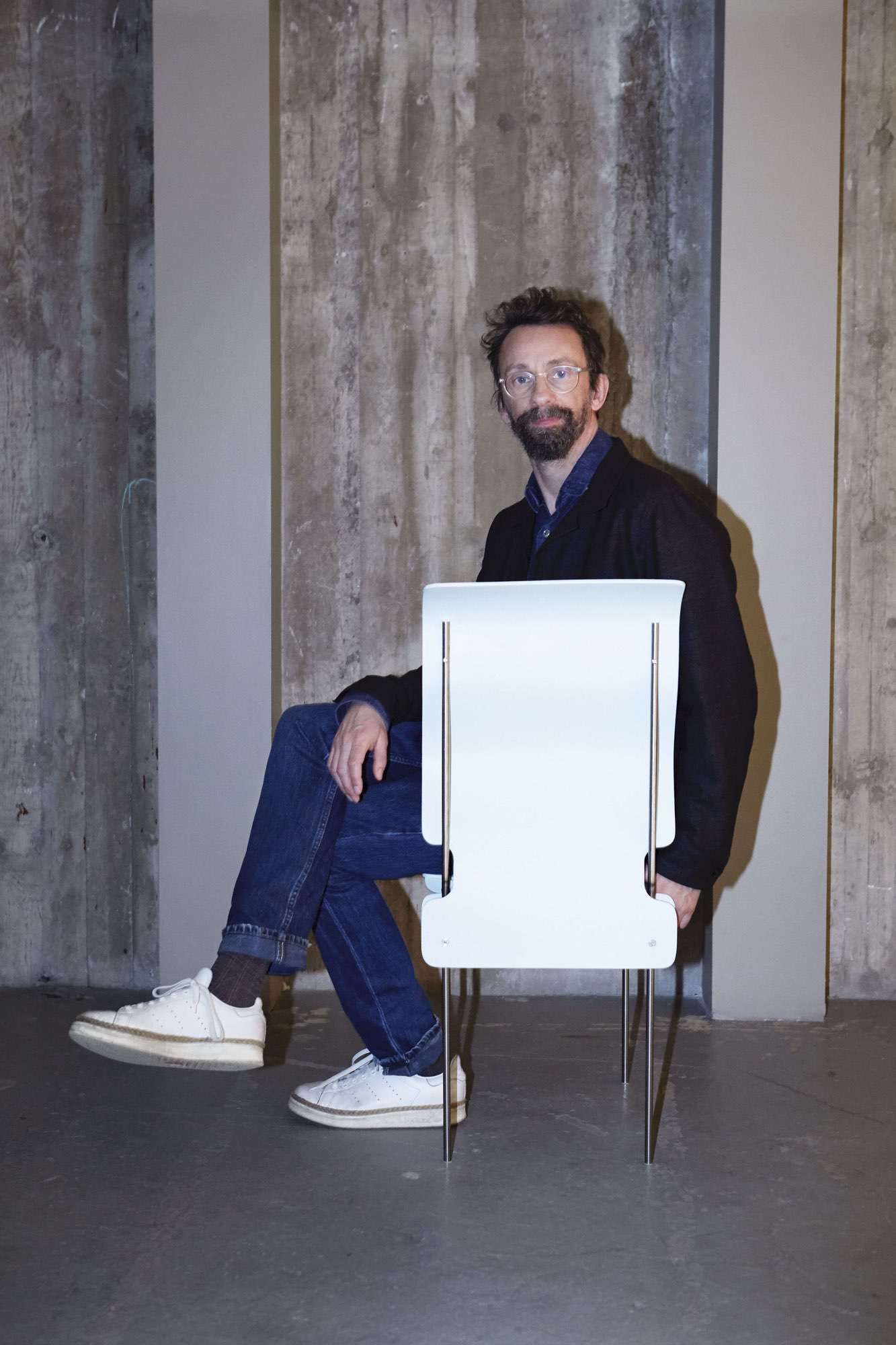
Andreas
Nobel
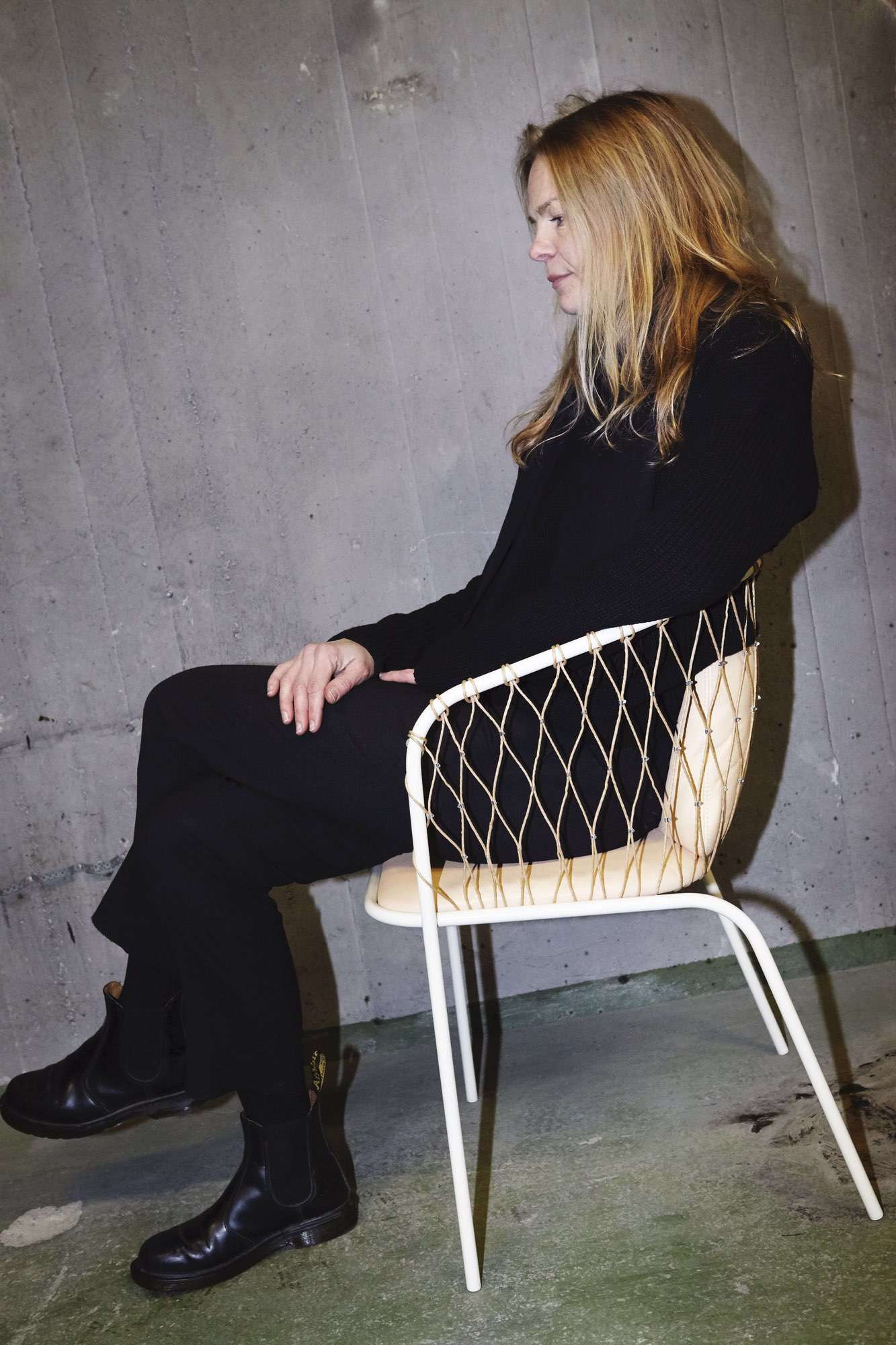
Mia
Cullin
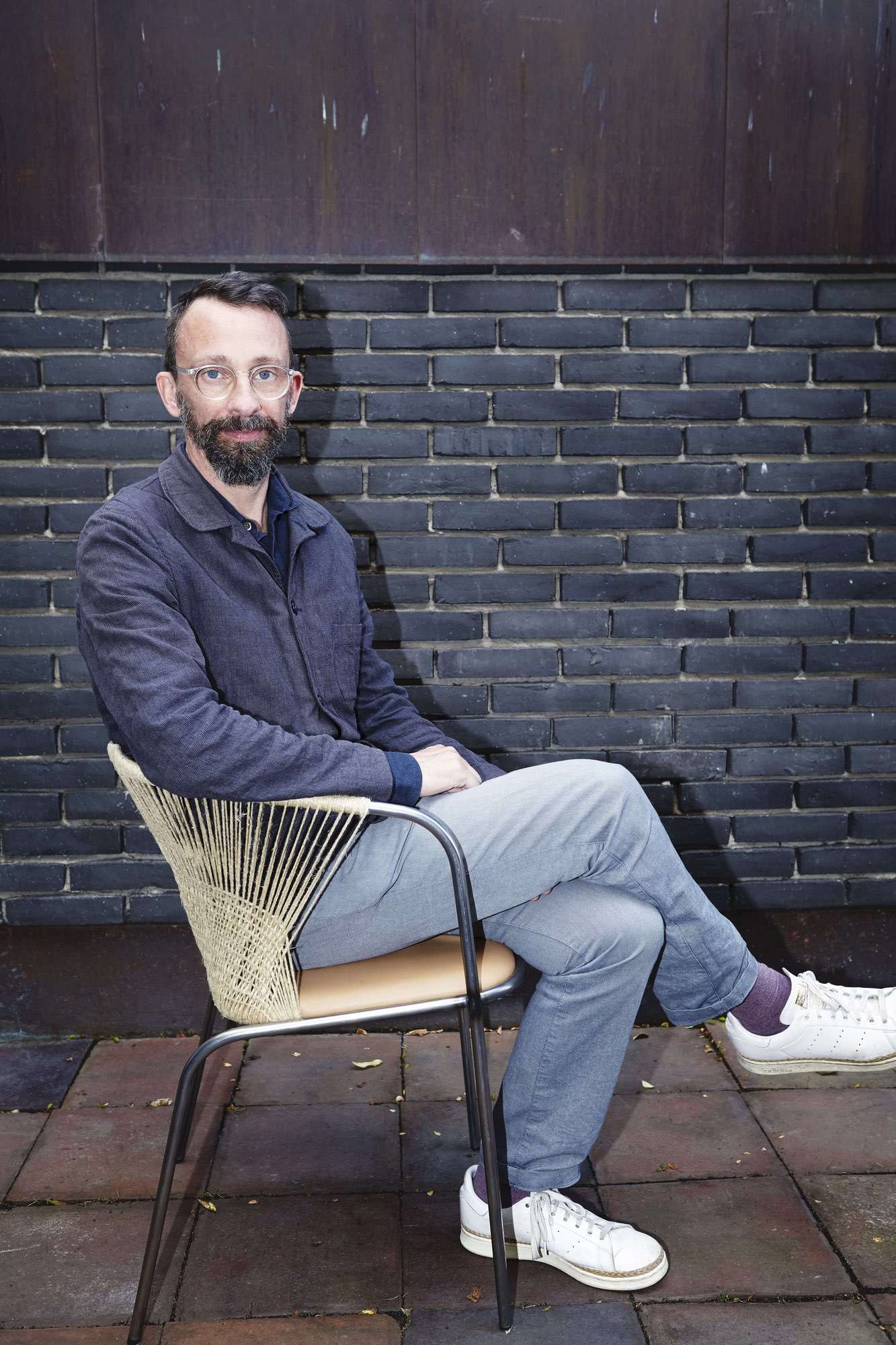
Andreas
Nobel
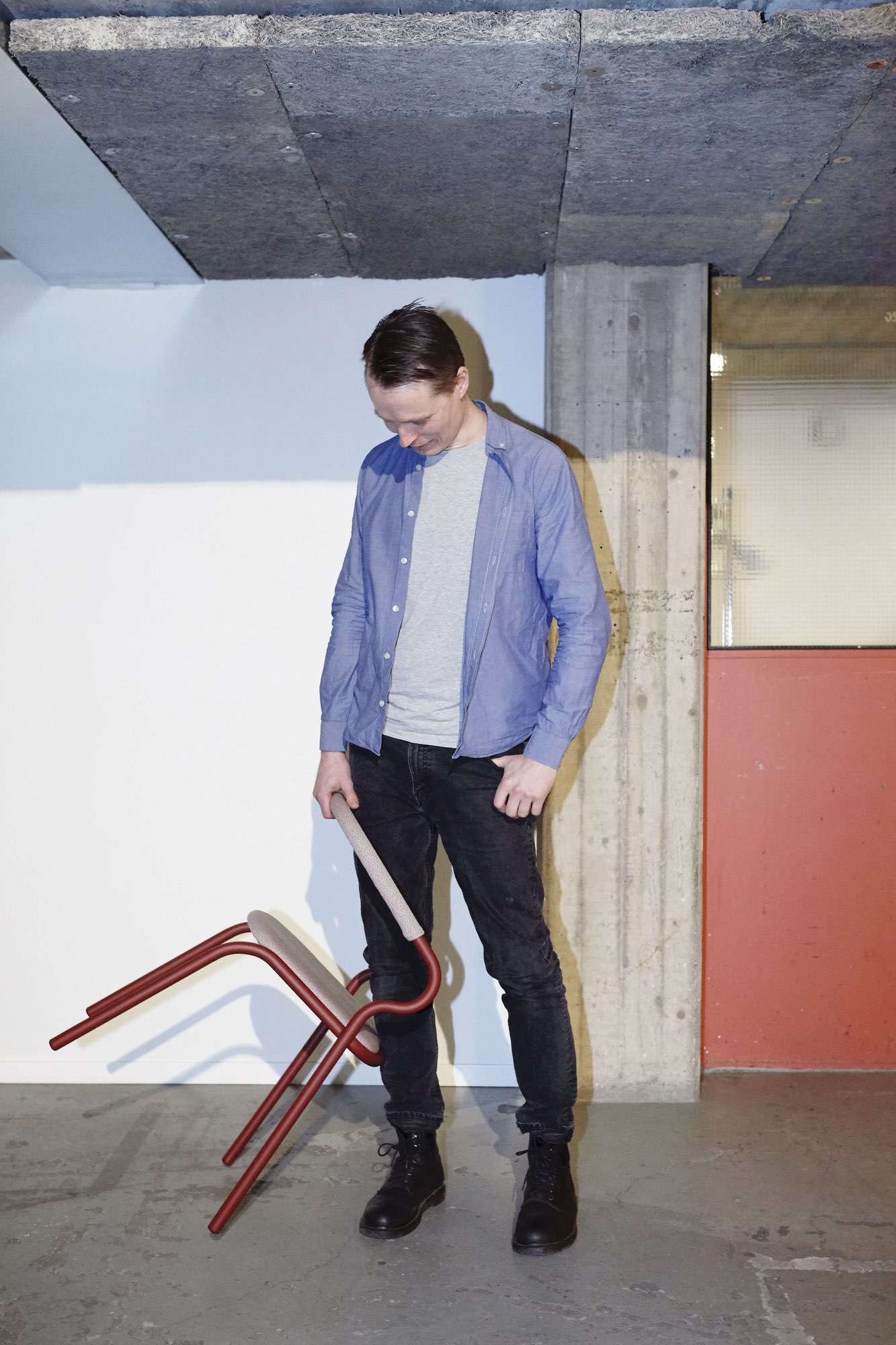
Erik
Björk
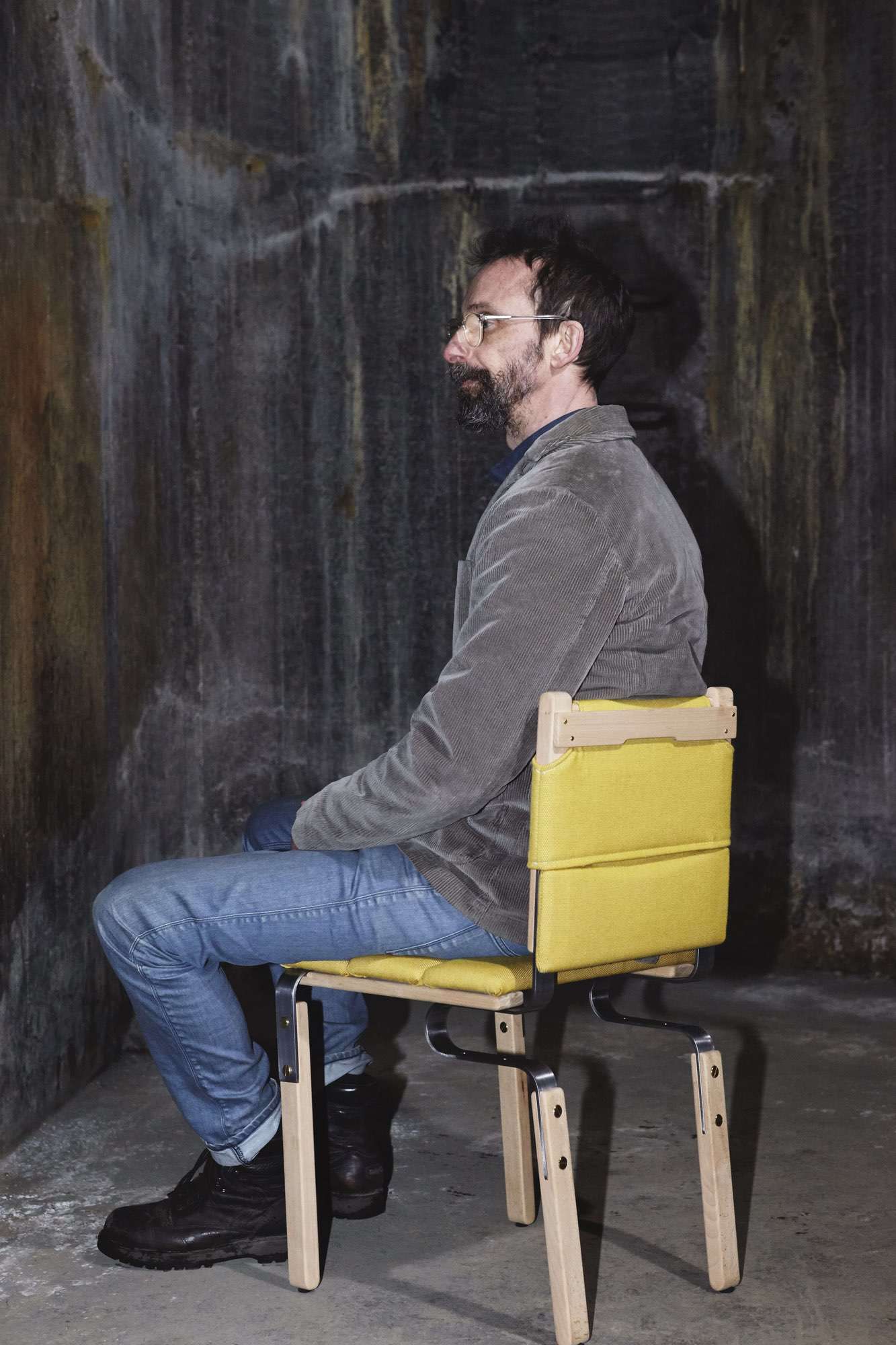
Andreas
Nobel
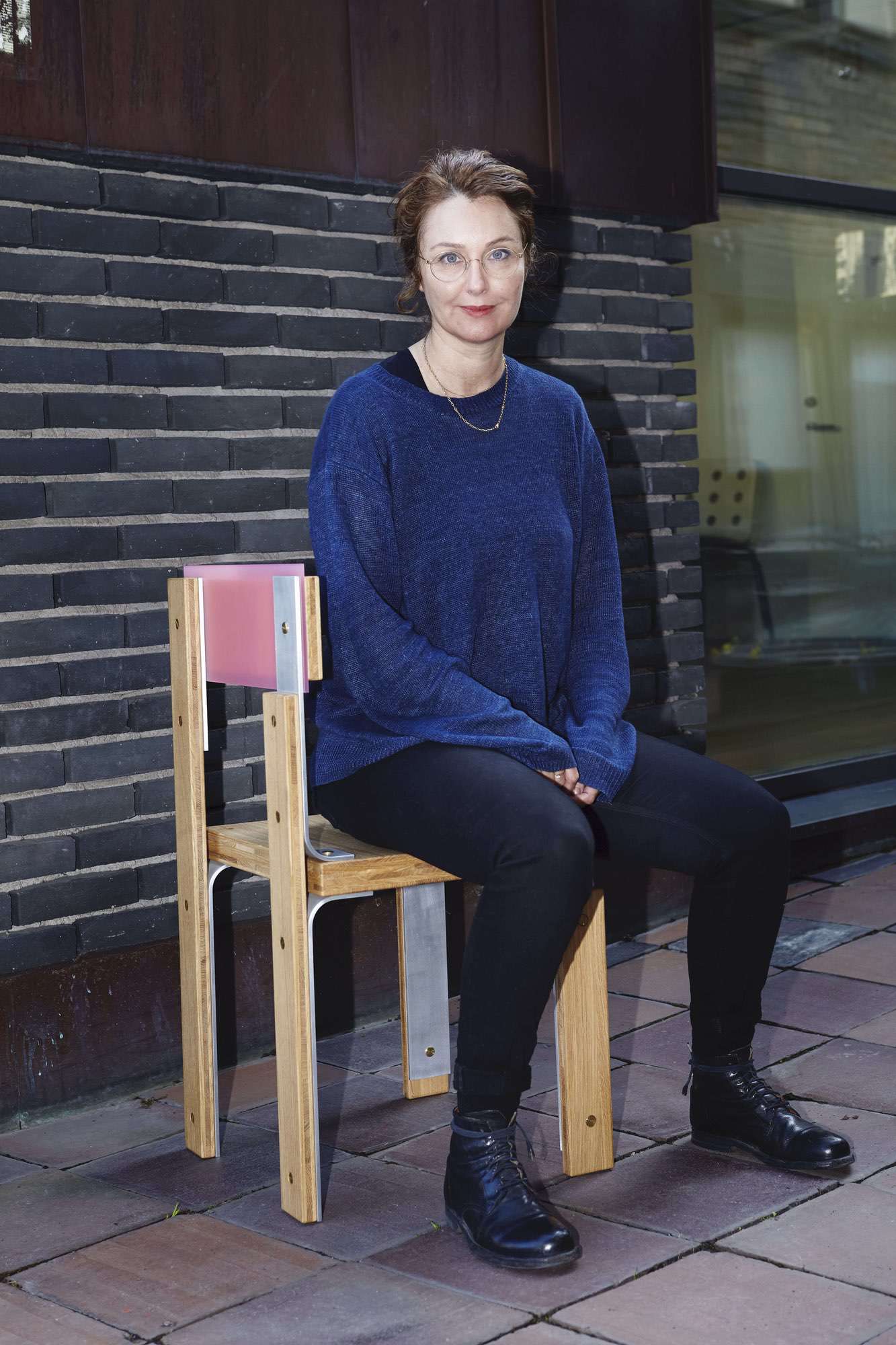
Margot
Barolo
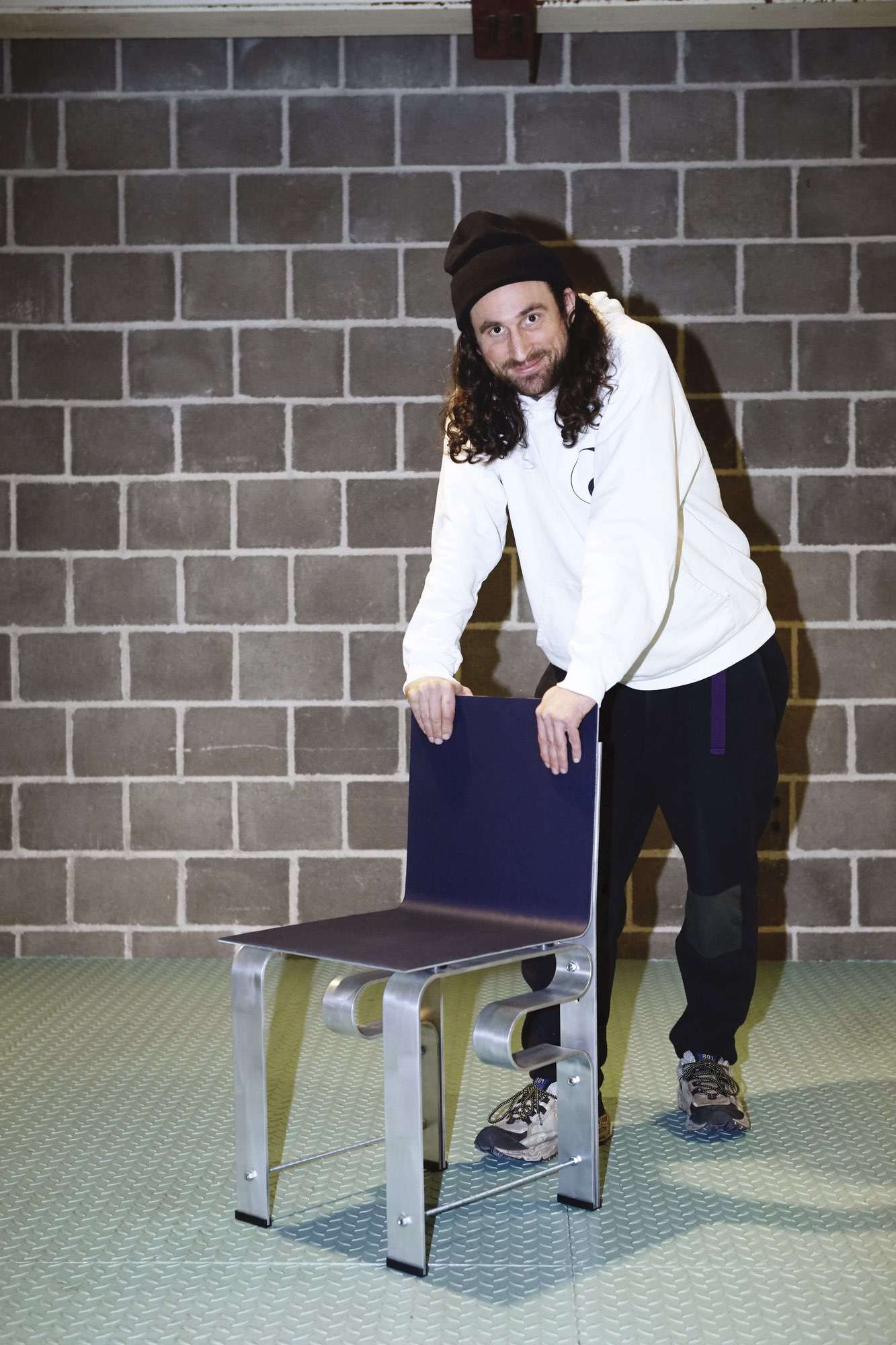
Fredrik
Paulsen
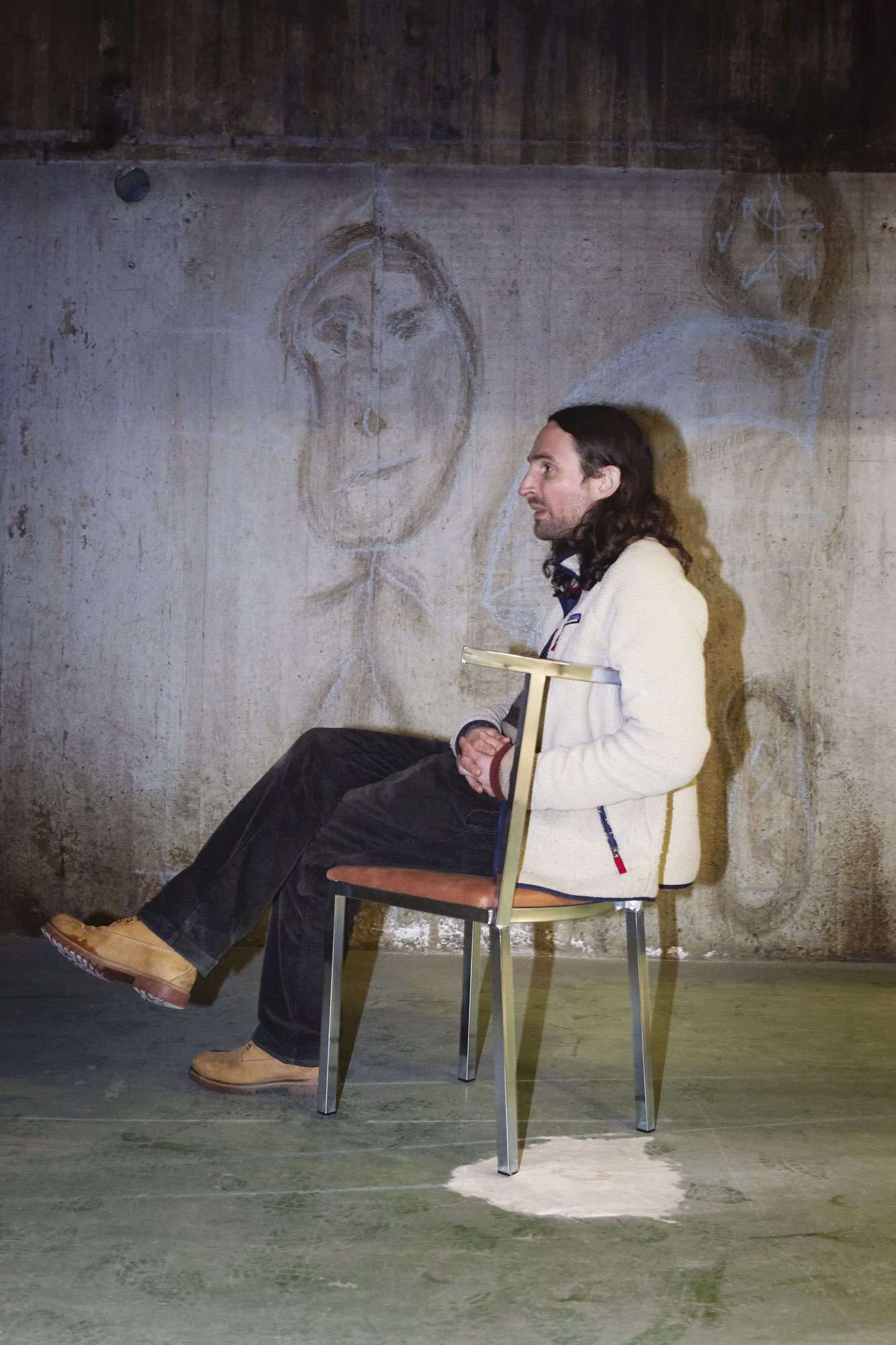
Fredrik
Paulsen
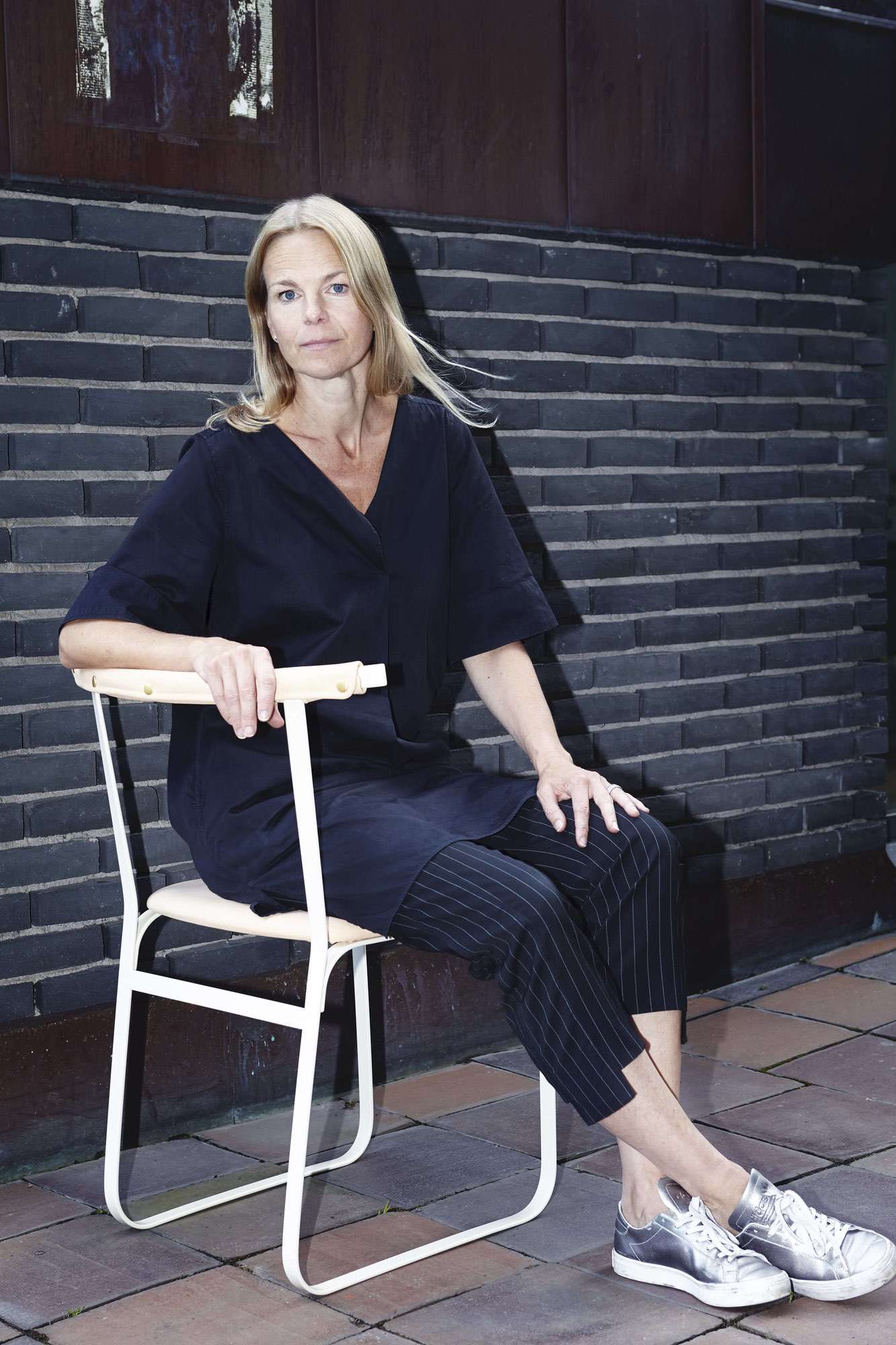
Mia
Cullin
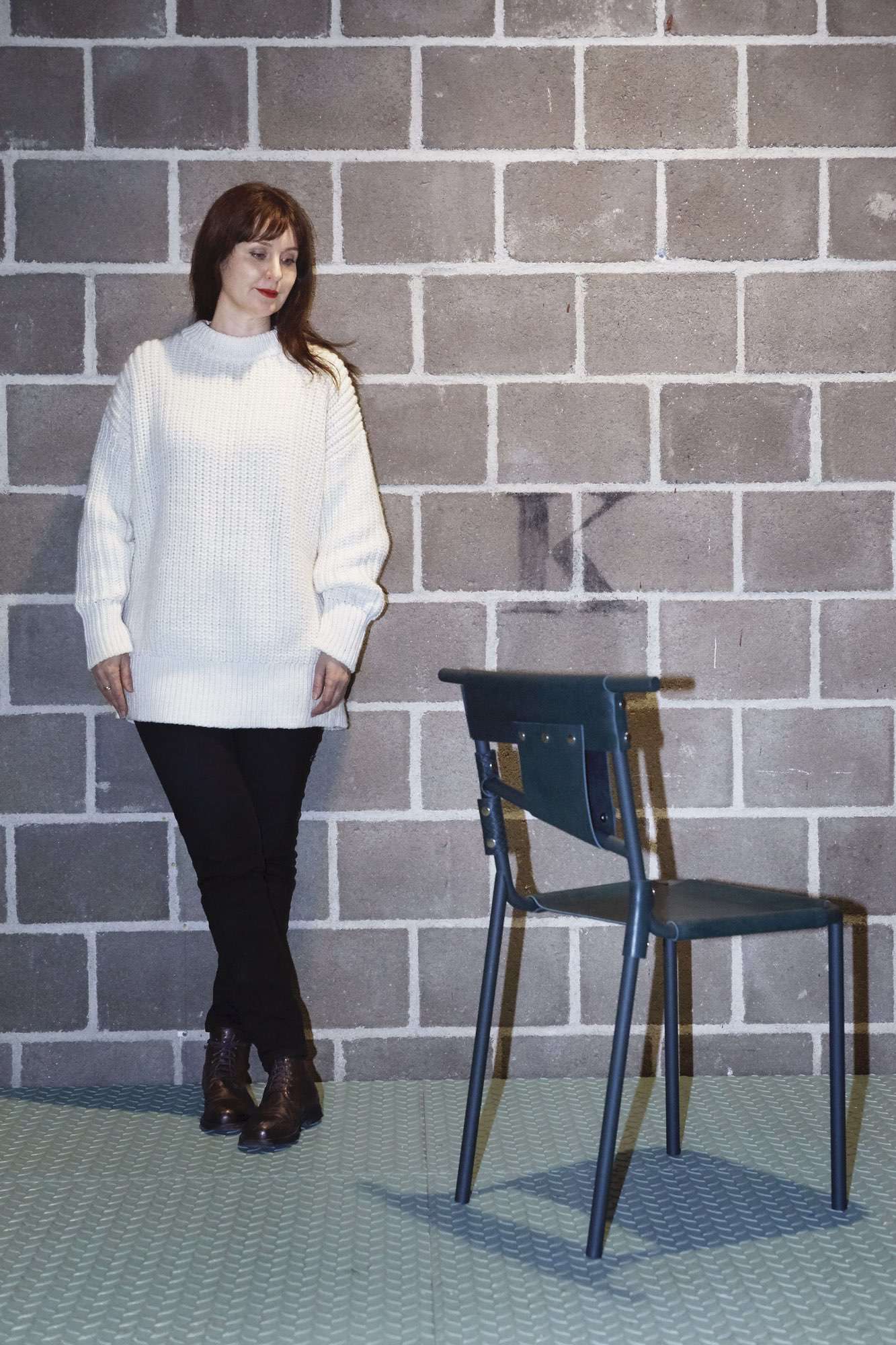
Margot
Barolo
Thank you!
Beckmans College of Design, for supporting and funding the project as part of the College’s artistic research.
Mitab, for our partnership; your generosity and support have been crucial to the result of the project.
Tärnsjö Garveri; your materials and craftsmanship played an essential part in the quality and beautiful completion of some of the chairs.
Sven-Harry’s Art Museum, for providing such a wonderful public setting for the final stage of the project, in the form of a fantastic exhibition venue, and for encouragement.
Kummelholmen and A-House, for letting us use your cool, beautiful venues for photography.
People
Designers
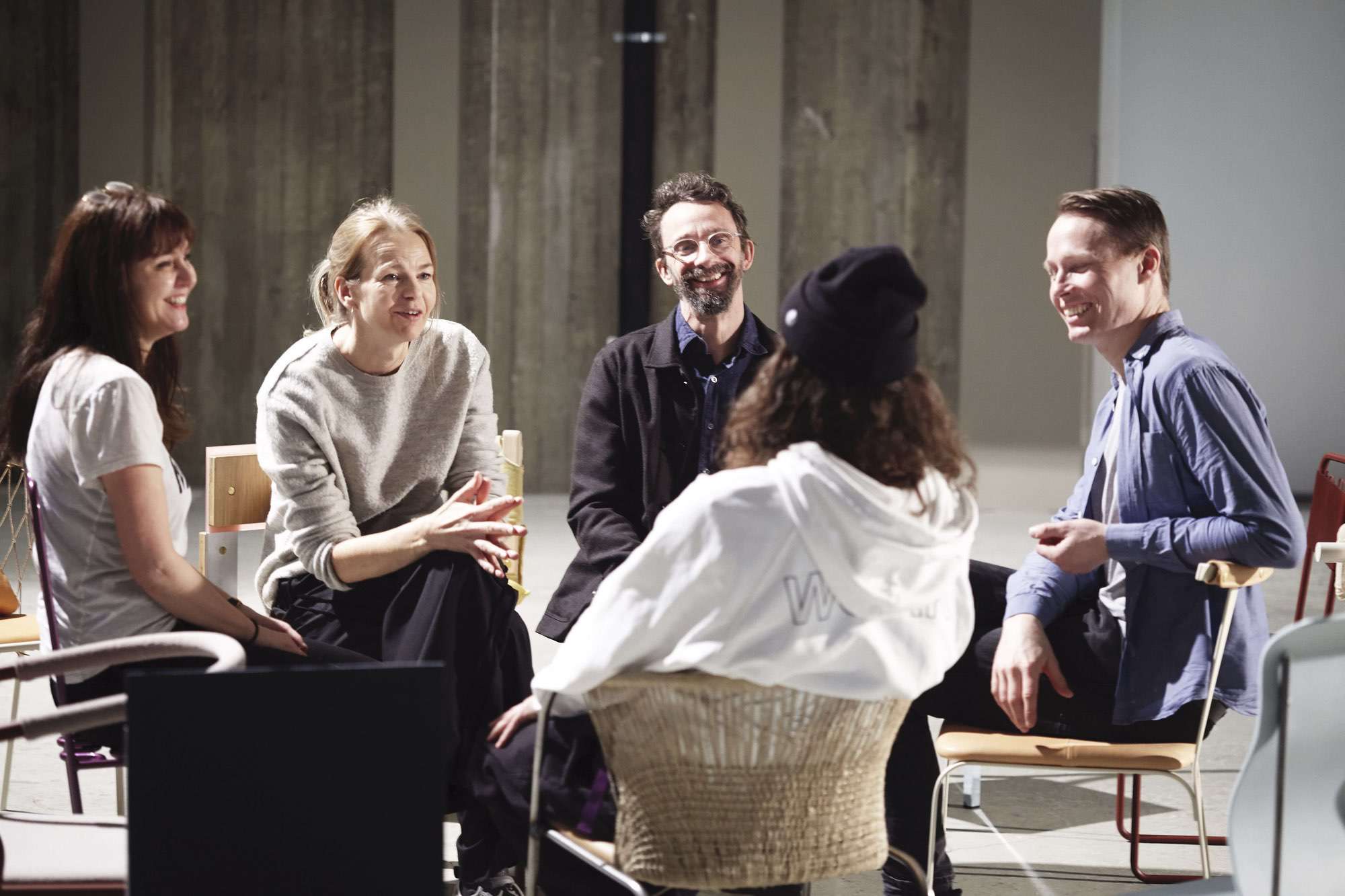
Photo by Karin Björkquist
Margot Barolo
A designer who has been running a design studio for two decades, alternating between assignments for the industry that span from product design and design strategies to her own artistic explorations and commissions of trust.
She often engages in subjects and projects that challenge the perception of design production and the role of the designer. Since 2015, Margot Barolo has been the programme director and senior lecturer at Beckmans College of Design. She initiated, developed and participates in The Kinship Method.
Erik Björk
A furniture designer, Erik Björk is also a lecturer in product design at the Beckmans College of Design, where he teachers wood and digital techniques.
Since 2009, he has operated a design bureau with Mattias Karlsson, alternating design commissions with more artistic explorations. Projects span from developing furniture to concepts and more spatial installations. Erik Björk’s contribution to The Kinship Method is as a designer.
Mia Cullin
A designer and interior architect, who runs a Stockholm-based design bureau since 1998, designing furniture and products for Swedish and international companies.
She also operates her own production. Mia Cullin has won numerous awards. Her works are inspired by a profound interest in craftsmanship, materials and visual construction, resulting in products characterised by graphic shapes and intricate, woven details. She participates in The Kinship Method as a designer.
Andreas Nobel
Designer, interior designer and professor of furniture design at Malmstens Linköping University. Previously a lecturer in History, Theory and Context at the Beckmans College of Design, he has a PhD, with a thesis titled Dimmer på upplysningen (A Dimmer on the Enlightenment).
He is a prolific writer alongside his research and was a co-founder of Ugly Cute. His design is usually in wood, which he works by hand in the workshop. Andreas Nobel participates in The Kinship Method as a designer.
Fredrik Paulsen
A designer with an experimental and interdisciplinary approach, whose studio practice focuses on meticulously crafted furniture out of cheap materials.
His pieces are often one of a kind that end up in private homes, galleries and museums. Fredrik Paulsen is a co-founder of Örnsbergsauktionen and was invited in 2020 to create the design bar at the Stockholm Furniture Fair. He is also the recipient of numerous awards. He participates in The Kinship Method as a designer.
Other contributors
Salka Hallström Bornold
An arts and fashion writer and journalist, who contributes regularly to Bon, Plaza Magazine and Expressen Kultur.She was one of the curators of Moderna Museet’s exhibition Fashination and is the author of the monograph on the Mah-Jong clothing brand.
Salka Hallström Bornold has also been featured in several anthologies on the arts, design and fashion. In 2008, she was appointed Journalist of the Year by Sveriges Tidskrifter. She is currently the assistant editor-in-chief for the magazine Form. For The Kinship Method, Salka Hallström Bornold has contributed texts and takes the role of discussion facilitator.
Samira Bouabana
A graphic designer, art director and programme director for Visual Communication at the Beckmans College of Design. She co-founded the internationally-recognised Hall of Femmes and has contributed to an essential and accurate historiography in the field of design.
Samira Bouabana has run the design studio Hjärta Smärta and is the recipient of numerous awards for her work. She designed the visual communication for The Kinship Method, in connection with the exhibitions at the Sven-Harry Art Museum, Rian Design Museum and this book.
Karin Björkquist
A photographer with a long experience of photographing interiors, design, architecture and people for a few of our largest publications, including Elle Decoration, Residence and numerous books on textile and glass design.
Karin Björkquist is consulted by clients in a broad field spanning from individual craftspersons to major international corporations. Using only natural light in her practice, she decided to make an exception from her usual concept for The Kinship Method and try new approaches.
Book
As a part of the Kinship Method, we wanted to document our journey in the form of a book, which we are publishing in collaboration with Arvinius + Orfeus Publishing.
It’s a story and example of how a practice based project can grow knowledge and contribute to change the designer role. As well as questioning the ideas of how design should be done and why we should make a “fun revolution”.
It can also be seen as an instruction, as well as a debate post, or an inspiration. For all of you who are interested in processes, artistic work, design and its place within production and goods, this book is of interest.
The book consists of photographs by Karin Björkquist, texts written by the five designers, as well as transcriptions of the therapy sessions held by Salka Hallström Bornold. This comes together in a 110 page book with graphic design by Samira Bouabana and John Bengtsson.
If you want to read some excerpts from the book, you can do that in the section below!
Buy the bookExcerpts from the book
Before:
Before:
“Design therapy” I alternate between fear and desire when it comes to listening to designers talk about their practice. With few exceptions, it’s as exciting and penetrative as hearing an elite athlete drone on about their performance and current stamina. So, it’s a bit optimistic putting five designers in a group discussion and hoping this will be a fruitful way of adding some depth to a project. And I personally am really bad at therapy. Time limits and uncomfortable questions make me nervous – and I don’t want to disappoint the therapist. Which probably causes me to disappoint the therapist. Even hypnosis fails on me. One of my design teachers had group therapy as a mandatory subject. That ended in a kind of mental group assault that some of us never
recovered from. This has probably contributed to my terrified yet delighted and ambivalent YES to Salka’s suggestion that the project should include group therapy-inspired sessions. Perhaps I could dive deep into a few inner nooks after all . . . Albeit disguised as method development and the naissance of a few chairs. In the course of the project, we group members have come to think of it as design therapy.
Session one
Session one
Salka Andreas, have you got anything to say?
Andreas I think I’m a bit ambivalent about collaborations. I did them more in the past, and I do believe it’s good for the final products. They do turn out better. But it’s hard because it requires concentration, introvert concentration and work and – I don’t know, I may have too many social problems to get such a discussion going. It’s a burden and I think that’s why I’ve stopped with interior design. I really think that interior design is more interesting than furniture, but there’s so much to keep track of. With a chair, you can set limits. But this project has been fantastic. It’s working introvertly and together at the same time. But it’s not a collaboration where you sit and talk and negotiate. You just pass it on. I like that.
Fredrik That’s what’s interesting, because the product is a collaboration. But the work process may not be.
Salka It could also be that people have different roles that don’t work within, in practice. One does less, another does more and in the end gets upset. This, on the other hand, is structured and planned out.
Session two
Session two
Salka We can keep talking in relay, like the project. So then it’s your turn, Margot.
Margot I was pleased to get Andreas’s chair, because I really liked it at first sight. I immediately saw the chance to continue with padding, textiles and wood. But that’s not what happened. I thought I made brilliant sketches but realised, “I can’t do this, I’ve deviated too far from what I’m supposed to do”. I even wrote you a letter, Andreas, when I was at my most frustrated.
Andreas Which you never sent.
Margot I could’ve actually done it. I said to Erik, “I’ve even written to Andreas, but I don’t know if it’s a good idea”.
Andreas What did you write? “This isn’t working”?
Margot No, more that I was wondering what it was that was making me a bit angry. The design elements are far from me. I had to start over many times and got more and more panicky. I thought, okay, I’ll drop the textile and make something else, use your design but fatten it up so it’s more me, if that’s at all important. My head ran a few laps, and I’m very happy that it did.
Session three
Session three
Andreas I’ve found new methods, through the new techniques that came with materials that were new to me. I haven’t worked with either leather or steel tubes or braiding before—not to mention that sewing. I would also like to tell you what I’ve done since our last time. I found it very easy this time. My idea just fell into place. Nosag springs were used in both predecessors. That makes it possible to join these parts, it won’t give it the same profile or curvature, but that doesn’t matter because it’s a mental nosag.
Fredrik The reasoning behind this one is probably what I looked most forward to, as it’s an incredibly beautiful chair, but how the hell do you follow that, like, theme? That’s what I wanted to hear.
Salka So here we are with chairs that have DNA from all of you. What are your thoughts around that?
After:
After:
When I had finished the letter that I never sent to Andreas, things started to happen. A new determination took hold, and I resolutely began to deconstruct his chair. Once the parts lay there in all their paltriness, exposed, lined up and sorted according to material, my fears of impinging on someone else’s design vanished. Fourteen wood sections, four of which were covered in textile, a thin round rod, four bent iron fixtures and twenty brass screw heads, and other assorted bits to fill out and join the pieces. Now my heart rate and my speed increased, from fear of backing down. I widened the wood parts and transformed the lightness of ash to the weight of oak. The hard, shiny steel turned to matte, pale aluminium. I doubled all the segments, cutting or lengthening some of them. Discarded the fabric and found a piece of pink plastic. Order was changing into a pile of abstract parts. My hand reached out and grabbed one part and then another. With the material, I built an archetypal shape in an order where the parts protested viciously every time I tried to arrange them into some kind of symmetry. Either they preferred to retreat into their shell, or to shoot upwards idiosyncratically. Everyone wanted to be included, to have a purpose, and not to be subordinated. Where one was weak, another stepped in. Flair or function, that was no longer relevant. In the eleventh hour, when a chair was standing before me, I could breathe again.
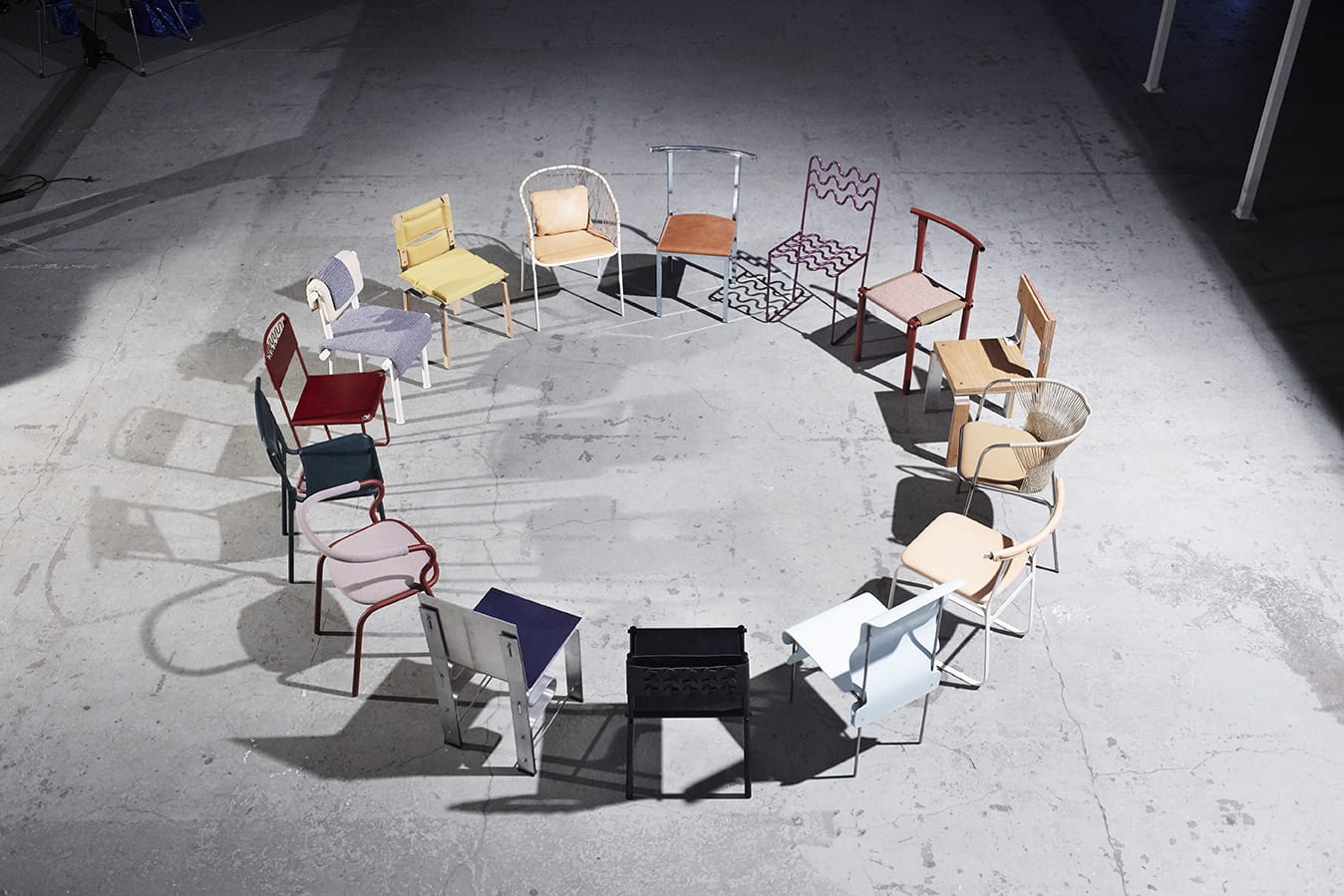
Experiment, design therapy and alternative design production: The Kinship Method is a collaborative design method created by Margot Barolo.
Each designer makes three chairs in three rounds like a relay race, based on the creation of the previous group member. Through the act of daring to give and receive they find new ways to develop the designer role.
The Kinship Method:
© 2020 Margot Barolo
Photographs:
© 2020 Karin Björkquist
Website: John Bengtsson
